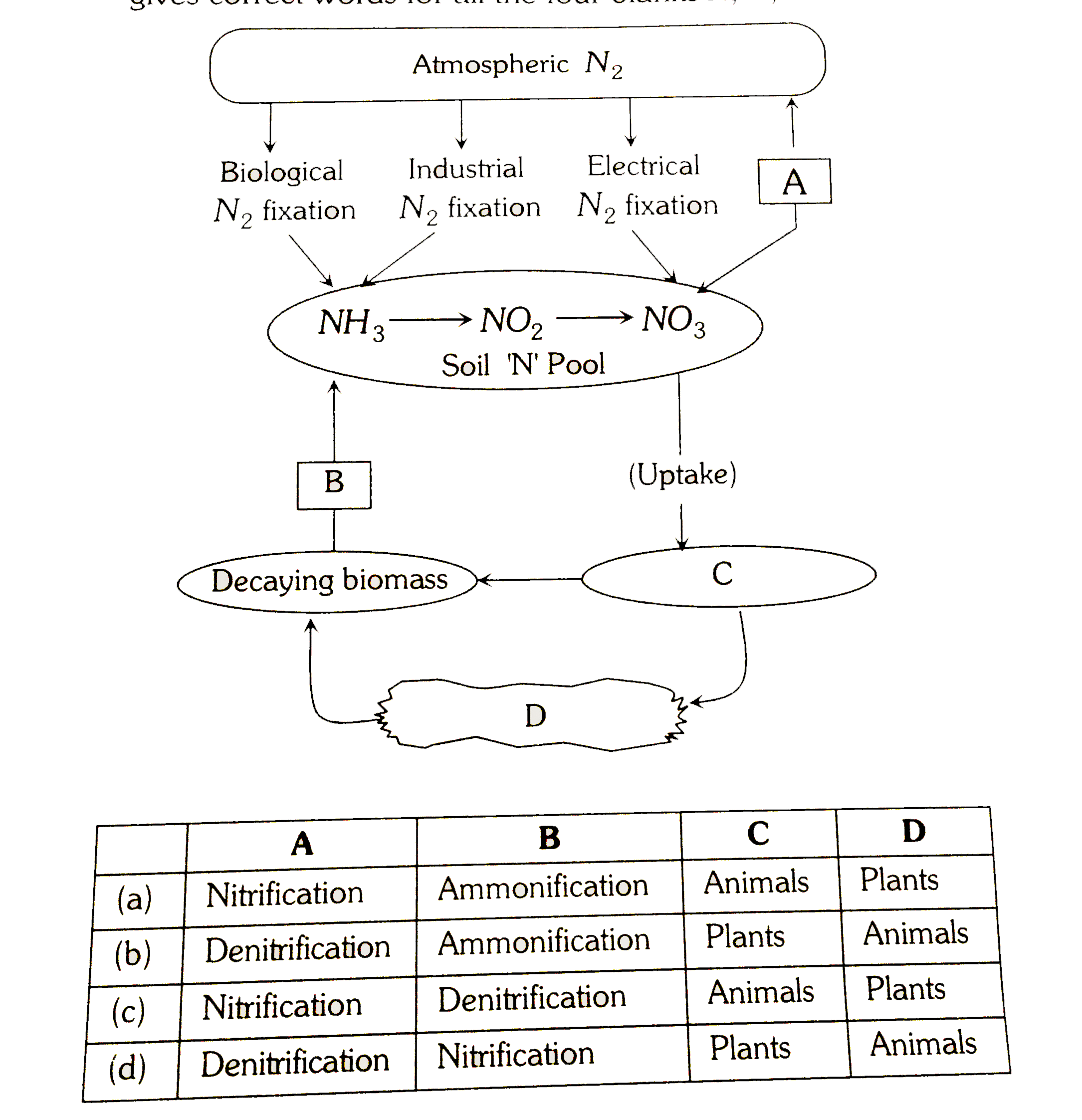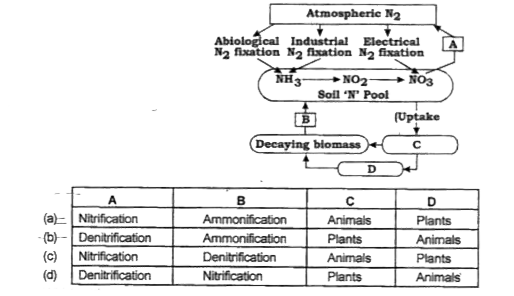Fasciola infects its primary host at _A_ larval stage and its secondary host at _B_ larval stage. Select the option which gives correct answer for blanks in above statement.
A-Sporocyst, B-Cercaria
A- Metacercaria, B-Miracidium
A- Cercaria,B-Metacercaria
A- Miracidium, B-Sporocyst
To solve the question regarding the larval stages at which Fasciola infects its primary and secondary hosts, we can break down the information as follows:
1. Identify the Organism: The organism in question is Fasciola, commonly known as the liver fluke.
2. Understand the Life Cycle: Fasciola has a complex life cycle that includes several larval stages:
- Egg Stage: The life cycle starts with eggs that hatch in water.
- Miracidium Stage: The first larval stage that emerges from the egg and infects the first intermediate host, which is usually a snail.
- Sporocyst and Redia Stages: These are developmental stages within the snail.
- Cercaria Stage: This is the stage that leaves the snail and can encyst on vegetation.
- Metacercaria Stage: This is the encysted stage that can infect the definitive host (primary host).
- Adult Stage: The mature fluke that resides in the liver of the definitive host.
3. Determine the Primary Host: The primary host for Fasciola is typically a mammal, such as cattle or humans. The infection occurs at the Metacercaria stage, where the fluke encysts on vegetation and is ingested by the primary host.
4. Determine the Secondary Host: The secondary host is usually the snail, where the infection occurs at the Miracidium stage. The miracidium hatches from the egg and infects the snail.
5. Fill in the Blanks: Based on the above understanding:
- For the primary host (definitive host), the larval stage is Metacercaria.
- For the secondary host (intermediate host), the larval stage is Miracidium.
Thus, the correct answers for the blanks in the statement are:
- A: Metacercaria
- B: Miracidium
Final Answer:
Fasciola infects its primary host at Metacercaria larval stage and its secondary host at Miracidium larval stage.
---
- Egg Stage: The life cycle starts with eggs that hatch in water.
- Miracidium Stage: The first larval stage that emerges from the egg and infects the first intermediate host, which is usually a snail.
- Sporocyst and Redia Stages: These are developmental stages within the snail.
- Cercaria Stage: This is the stage that leaves the snail and can encyst on vegetation.
- Metacercaria Stage: This is the encysted stage that can infect the definitive host (primary host).
- Adult Stage: The mature fluke that resides in the liver of the definitive host.
- For the primary host (definitive host), the larval stage is Metacercaria.
- For the secondary host (intermediate host), the larval stage is Miracidium.
- A: Metacercaria
- B: Miracidium
Fasciola infects its primary host at Metacercaria larval stage and its secondary host at Miracidium larval stage.
Topper's Solved these Questions
Similar Questions
Knowledge Check
Leydig cells secrete A under the influence of B which is secreted by C . Choose the option which gives the correct answer for blanks in above statement
AA- Estrogen B- FSH C - Poslenor pituitaryBA - Androgen B - Testosterone C - Interstitial cellsCA - Testosterone B - LH C - Anterior pituitaryDA - Androgen B - LH C - Seminiferous tubulesIn knee jerk reflex,
A functions as receptor organ while
B functions as effector organ, Choose the option which gives the correct answer for the blanks in above statement.AA-Patella bone B-Biceps musclesBA-Quadriceps femoris muscle B-Hamstring muscleCA-Hamstring muscle B-Quadricep femoris muscleDA-Patellar tendon B-Quadriceps femoris muscleIndividual muscle bundle is known as A_ and many bundles are held together by a collagenous sheath of connective tissue called_ B Choose the option which gives the correct answer for blanks in above statement.
A(A) Fascia -( B) FasciculiB(A) Fascia -(B) EndomysiumC(A) Fascicle -(B)EndomysiumD(A) Fascicle -(B) Fascia
At neuromuscular junction, a released by b binds to its receptors present on c thus generating action potential in latter.Choose the option which gives the correct answer for the blanks in the statement given above.
View SolutionStudy the cycle shown below and select the option which gives correct words for all the four blanks, A,B,C and D.

View SolutionWhich animal do not possess larval stage in its life cycle
View SolutionSecondary host of fasciola is infected at which larval stage ?
View Solutionwhich larval stage of Ascaris is infective
View Solution

